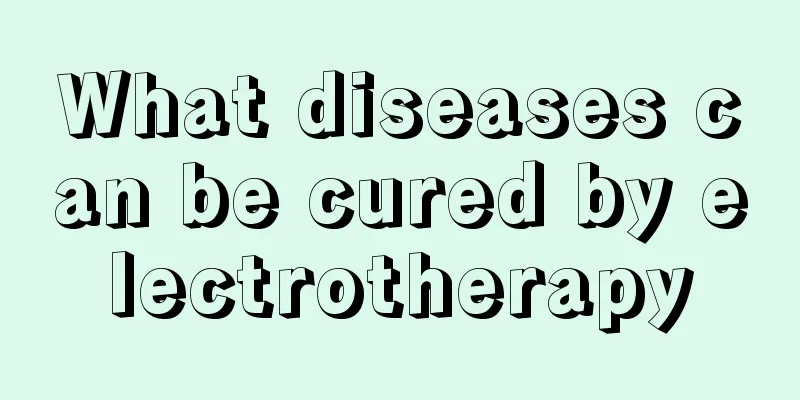What diseases can be cured by electrotherapy

|
Electrotherapy is a very popular way of treating diseases nowadays. Different from traditional Chinese medicine or Western medicine, electrotherapy is a very special physical therapy that achieves the purpose of treating diseases by using electric currents of different intensities to stimulate the human body. Electrotherapy has relatively few side effects on the human body and is beneficial to people's health care and wellness. It is a treatment method with many functions. So, what diseases can electrotherapy cure? Upper limb therapy The upper limbs include the upper arm, forearm, shoulder joint, elbow joint, wrist joint and finger joints. This method can be used for treatment when bone hyperplasia causes pain in the patient's upper limbs and joints and movement disorders. During treatment, cable electrodes can be used or the cables can be wound into circular coils and placed on the shoulders and upper limbs (Figure 3-3). Use slight heat or warm heat for 15 to 30 minutes, once a day or every other day, 10 to 20 times as a course of treatment. Lower limb therapy The lower limbs include the joints of the thigh, calf, hip, knee, ankle and foot. This method can be used for treatment when bone hyperplasia causes pain in the patient's lower limbs and joints and movement disorders. During treatment, cable electrodes can be used or the cable can be wound into a circular coil and placed in various parts of the lower limbs (Figure 3-4). Use slight heat or warm heat for 15 to 30 minutes, once a day or every other day, 10 to 20 times as a course of treatment. Back and waist therapy This method can be used to treat patients who have bone hyperplasia in the thoracic and lumbar spine or lumbar osteoarthritis, which causes pain and numbness in the back and waist. Place 8 cm to 12 cm electrodes on the waist or both sides of the lumbar spine (Figure 3-5). Use warm temperature for 15 to 20 minutes, once a day or every other day, 10 to 20 times as a course of treatment. Patients should pay special attention to prevent skin burns when undergoing shortwave electrotherapy at home. The main causes of burns are: first, the treatment current is too strong; second, the patient moves his body during treatment, causing the cable electrodes to change position, resulting in excessive concentration of power lines; third, the wires come into contact with the skin. Therefore, when patients are receiving treatment at home, if they feel uncomfortable, they should turn off the equipment in time, find the cause and deal with it properly. |
<<: The function of medium frequency electrotherapy instrument
>>: The inner thigh becomes itchy when it gets hot
Recommend
Should I apply ice or heat to my eye bags?
As women age, they experience sagging skin around...
How much does it cost to treat early breast cancer?
Early chemotherapy for breast cancer costs about ...
What causes itchy face in autumn? 5 factors that cannot be ignored
The weather is relatively dry in autumn. If you d...
What are the early symptoms of bone cancer
In recent years, bone cancer has become one of th...
How to remove mites from the body
Mites are a relatively common parasite. Although ...
How does prostate cancer metastasize? What is the cause of prostate cancer?
How does prostate cancer metastasize? What is the...
What are the side effects of Acanthopanax?
Acanthopanax is a relatively common Chinese herba...
What are the classifications of heart failure
Heart failure refers to severe damage to the myoc...
Brief analysis of three common treatments for rectal cancer
Rectal cancer is a tumor that is difficult to com...
What are the benefits of eating chestnuts? 6 rare benefits
Chestnut is a common food with extremely high nut...
How long does it take to recover after draining the water from the knee for bacterial culture
It is quite common to have fluid accumulation in ...
What is the mid-term cure rate for testicular cancer
At present, the treatment effect of testicular ca...
Is rectal cancer inherited from generation to generation?
Many patients with rectal cancer have a high chan...
When should I pay attention to stitches after wisdom teeth extraction
Wisdom teeth will only grow out after people are ...
How long does it take for anal pain to recover after radiotherapy for rectal cancer
The recovery time for anal pain after radiotherap...









